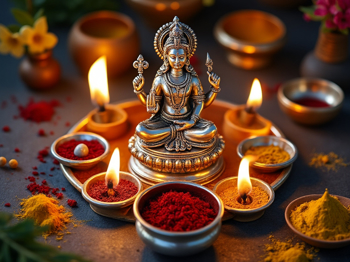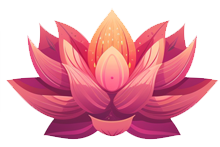



Swarna Gowri Vratam is a significant Hindu festival dedicated to the worship of Goddess Gowri, an incarnation of Parvati, the consort of Lord Shiva. This sacred observance is primarily celebrated by married and unmarried women, especially in the southern states of India like Karnataka and Andhra Pradesh. The vratam, observed on the third day of the Hindu month of Bhadrapada (also known as Gowri Tritiya), is a day of devotion, fasting, and prayer, where devotees seek the blessings of Goddess Gowri for marital bliss, prosperity, and well-being.

The Swarna Gowri Vratam holds immense religious and cultural significance in the Hindu tradition:
Symbol of Divine Feminine Power: Goddess Gowri represents Shakti, the divine feminine power that governs creation and sustenance in the universe. Observing this vratam is a way to honor and invoke her blessings.
Fostering Marital Harmony: For married women, the vratam is believed to strengthen the bond with their husbands and bring harmony and peace into their marital life.
Auspicious for Unmarried Women: Unmarried women observe the vratam with the hope of finding a suitable life partner blessed by the divine qualities of Lord Shiva, symbolizing an ideal husband.
Cultural Preservation: The festival serves as a means to pass down cultural values and traditions to the younger generation, fostering a sense of identity and continuity.
Blessings for Marital Bliss: Women who observe the vratam with devotion are believed to receive the blessings of Goddess Gowri, ensuring a harmonious and joyful married life.
Prosperity and Well-being: The puja is thought to bring overall prosperity, health, and well-being to the family.
Success in Personal and Professional Life: Devotees often believe that the grace of Goddess Gowri will lead to success in various aspects of life, both personal and professional.
Spiritual Growth: Observing the vratam with sincerity is said to aid in spiritual growth and inner peace, fostering a deeper connection with the divine.
Fulfillment of Wishes: Many devotees hold the belief that their heartfelt wishes and desires will be fulfilled through the divine blessings of Goddess Gowri.
Cleansing of Negative Energies: The rituals and prayers performed during the vratam are thought to cleanse the mind and surroundings of negative energies, inviting positivity and good fortune.
This vratam, steeped in devotion and tradition, continues to be a cherished observance that connects devotees to the divine, ensuring their spiritual and worldly well-being.
Swarna Gowri Vratam is a detailed ritual that involves specific steps and items to honor Goddess Gowri. Here’s a step-by-step guide to performing the vratam:
By following these steps, you can perform the Swarna Gowri Vratam with devotion and receive the divine blessings of Goddess Gowri for prosperity, happiness, and well-being.
Once upon a time, there was a powerful demon named Mahishasura who received a boon from Brahma, making him nearly invincible. With this boon, Mahishasura began terrorizing the heavens and earth, even driving the gods out of their abodes. Helpless, the gods approached the Tridevi (Goddess Saraswati, Lakshmi, and Parvati) for help. Parvati took the fierce form of Goddess Durga and a battle ensued between Durga and Mahishasura.
Durga fought bravely for nine days and nights, finally vanquishing Mahishasura on the tenth day, which is celebrated as Vijayadashami. After the battle, to purify herself and restore her peaceful form, Durga transformed into Goddess Gowri and performed intense penance.
During her penance, Goddess Gowri adorned herself with gold jewelry and meditated on Lord Shiva. Pleased by her devotion, Lord Shiva appeared before her and asked her to return to Kailasa. However, she wished to bless her devotees on earth before leaving, so she decided to stay for a while.
On the day of Swarna Gowri Vratam, Goddess Gowri is said to visit her devotees, bringing prosperity and happiness to their lives. Women perform this vratam by invoking the goddess, symbolizing her presence through a clay or metal idol adorned with turmeric, kumkum, and gold jewelry.
The vratam involves offering prayers, performing rituals, and tying a sacred thread around the wrist. The thread, known as Gowri Habba, is believed to protect the wearer and grant them the goddess's blessings. Women pray for the well-being of their husbands, their family’s prosperity, and peace in their lives.
After the rituals, the idol is immersed in water, symbolizing the goddess's return to her heavenly abode, and the devotees celebrate with joy and festivity.
This vratam holds immense significance in the lives of married women, especially in Karnataka, and is celebrated with great devotion and fervor every year.